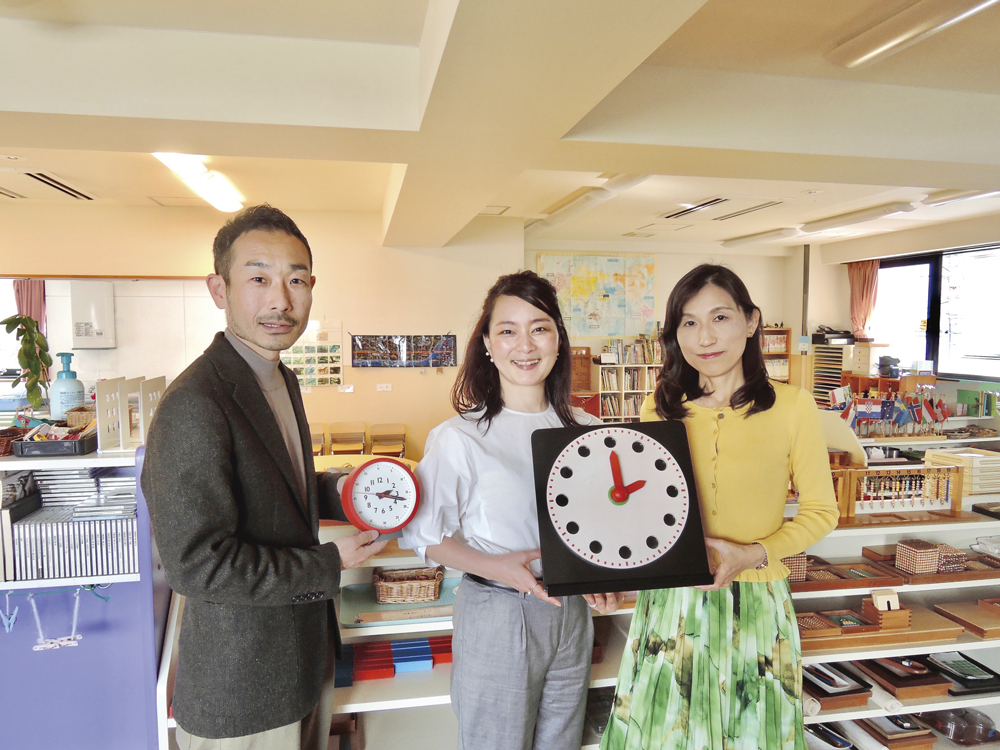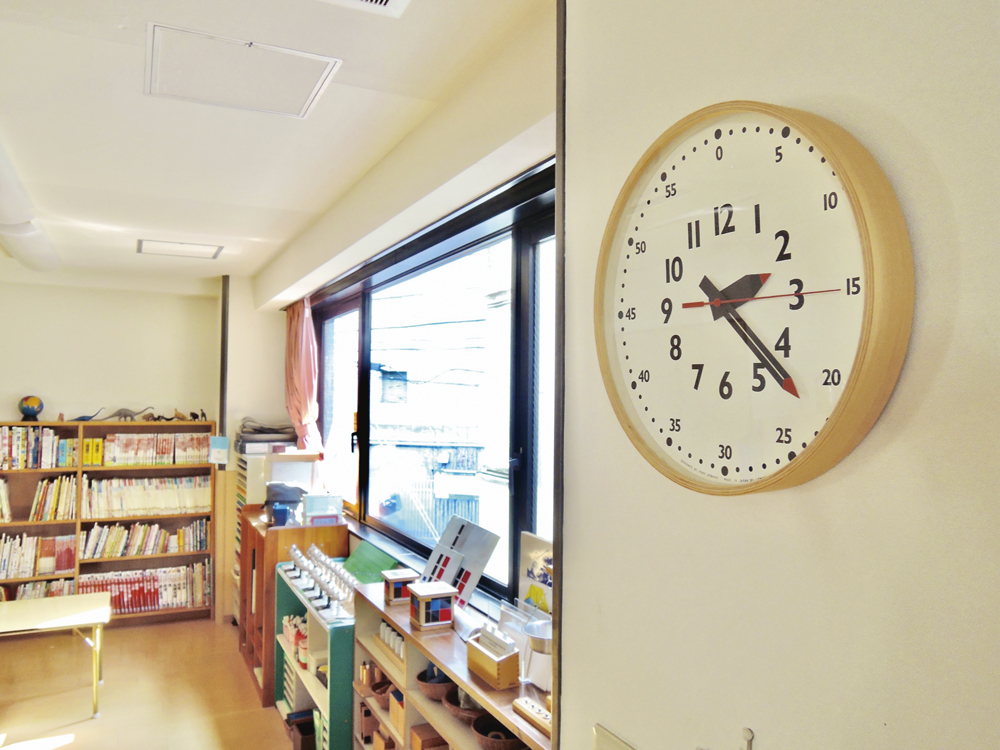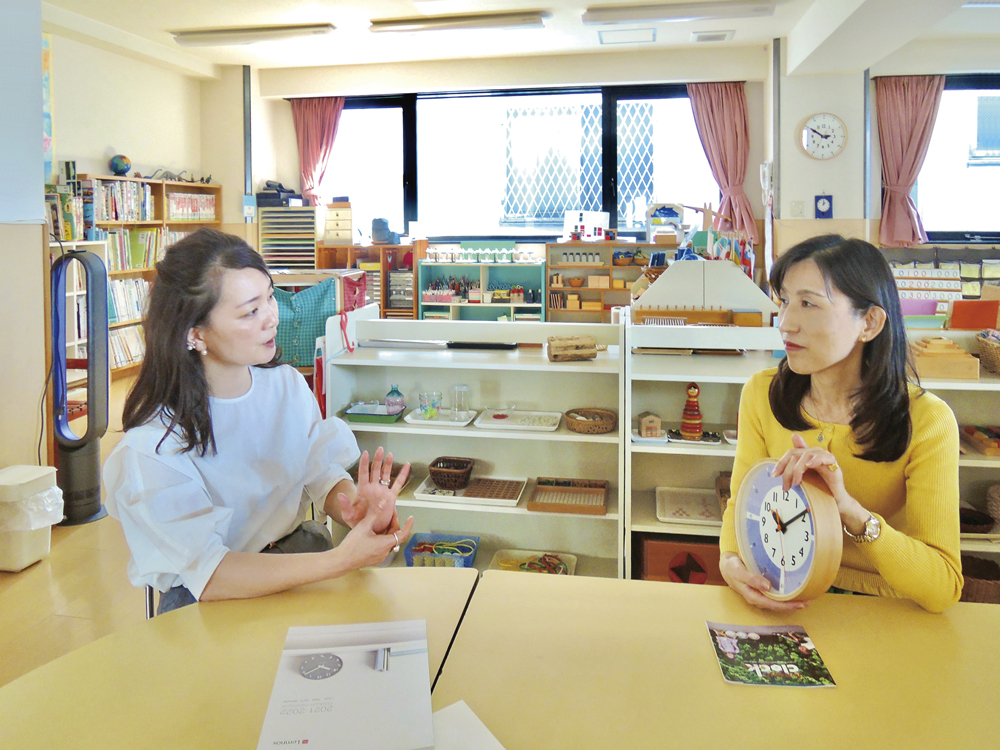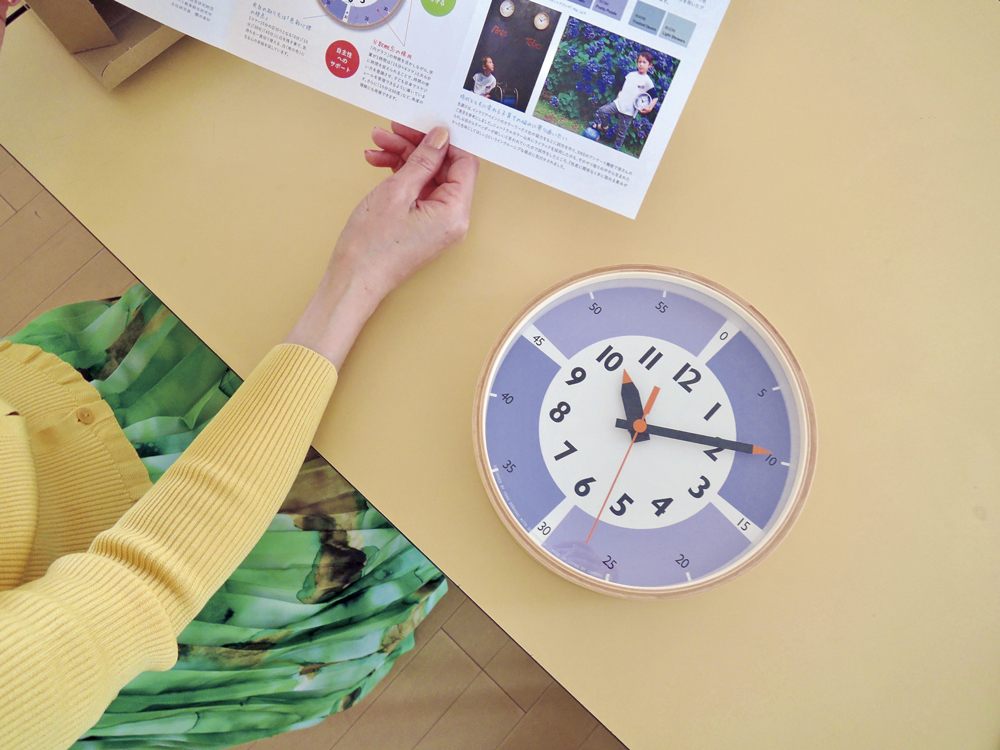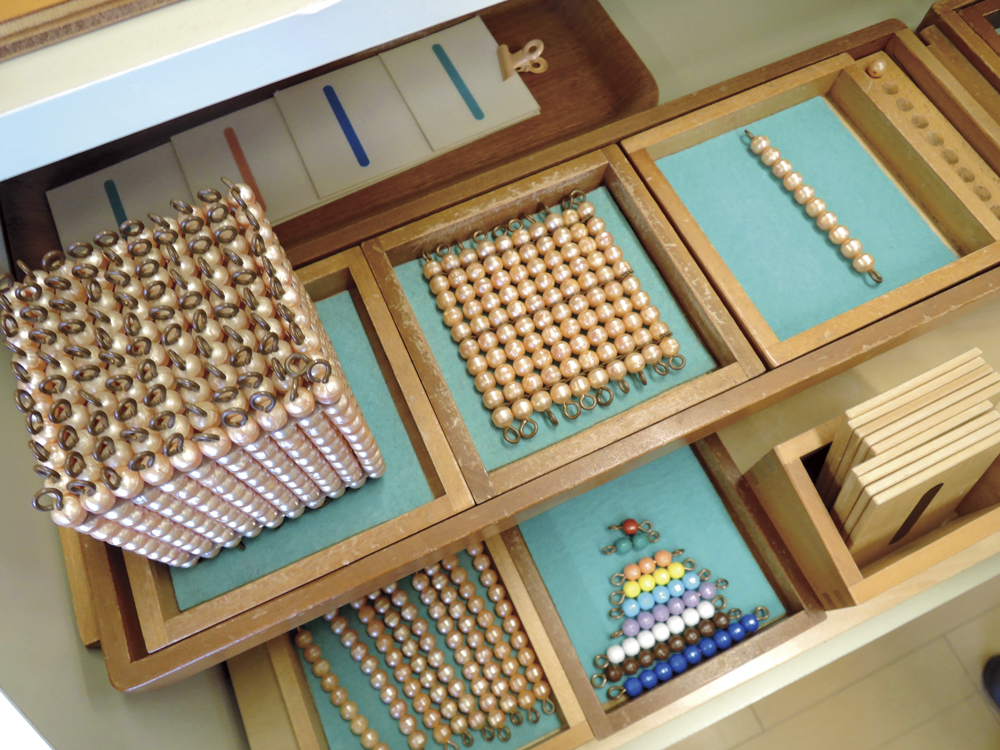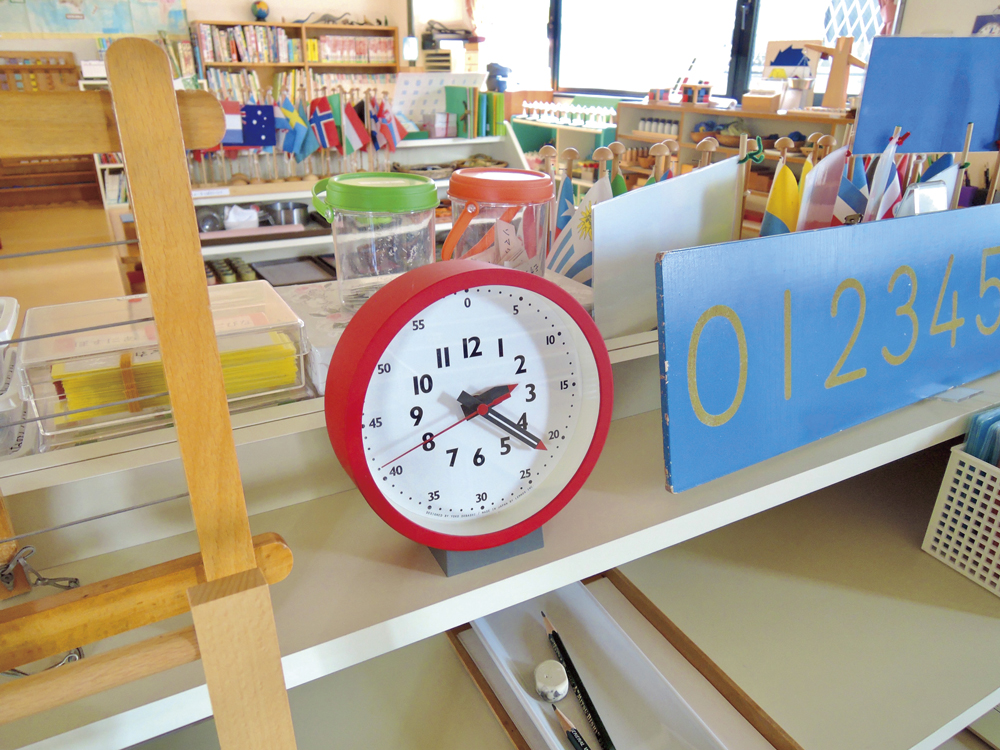Special Interview on the 10th Anniversary of the “fun pun clock”

Everyone has “time” equally. Clocks allow us to know “time” and choose how to use it in our own way.
When Yoko Dobashi, a mother of two and an interior design writer, started working on the “fun pun clock,” she first consulted with Ms. Misa Sakurai, a senior researcher at the Japan Montessori Teacher Training Institute. On the occasion of the 10th anniversary of the brand’s birth, the two discussed the idea again. They talked about “time” and “children,” starting with how the brand was developed.
Photo & interview by Maki Kakimoto(Lita)
Vice President of “Kodomo no Ie” (Children’s House), affiliated with the Japan Montessori Teacher Training Institute
Senior Researcher, Japan Montessori Teacher Training Institute
Misa Sakurai
Graduated from the Department of Child Studies, Faculty of Human Sciences and Design, Japan Women’s University
Currently studying in the Division of Education at the Graduate School of Integrated Arts and Social Sciences, Japan Women’s University
Diploma in Montessori teaching for 0-3 and 3-6 years old from the Japan Montessori Teacher Training Institute
AMS (American Montessori Society) Early Childhood Credential (2.5-6 years old) at MOMTEP, St. Louis, MO
Nursery teacher certification, first-class kindergarten teaching license, and first-class elementary school teaching license
Dobashi: “I first made a prototype with Lemnos and then consulted with you. You had the children use it and gathered a lot of feedback, based on which I made adjustments. There were many revelations that were truly eye-opening – for example, that fashionable designs are meaningless to children, and that some children feel uncomfortable using colors that have no basis in reality. The clock gradually took shape according to the children’s ideas, and I remember that the inevitable choices we made with respect to their development resulted in a clock with a design that adults also found wonderful to look at.”
Sakurai: “I have known you since your children started attending our preschool. Since clocks are an important part of the preschool, it was a good experience to have the children’s opinions reflected in the creation of the clock.”
Dobashi: “You still use it at the school. How are the children reacting?”
Sakurai: “I choose a form that suits the developmental needs of each child. So, when I want children to experience the concept of time, I sometimes start with a simpler form, and at other times, I use the fun pun clock to convey the concept. Analog clocks are always used at the preschool because it is easier for children to understand that the time is ticking.”
Children who have not yet experienced life do not understand the sense of “time.”
Dobashi: “When I hosted a workshop, many children could not read clocks and their parents didn’t know what to do about it. It was then that I realized there were no clocks that were easy for children to read. I thought that we could build on the ideas of Montessori education to truly understand readability. Two of my children attended this preschool, which I think gave us many opportunities to reflect on how we use our time. They had a period of time before lunch when they would raise their hands when they thought a minute had passed, and they would stand up to start preparing for lunch.”
Sakurai: “We have. Everyone has their own sense of time. I was trying to help them experience how long a minute is. Everyone counts in their own way, with some raising their hands very quickly and others very slowly, clearly showing that their sense of time varies. In other situations, for example, we use an hourglass to visually capture the time it takes for the iron to warm up, which is three minutes. In this way, they gradually develop a sense of time by associating the time we experience with the words ‘three minutes.’”
Dobashi: “It’s true that children don’t understand what time is, first of all.”
Sakurai: “That’s right. Adults have a sense of time because of their lived experiences. But children don’t know because they haven’t had the experience of living with time in mind.”
Dobashi: “I remember many things at the preschool, but the time spent walking on the line was particularly impressive. Is there a similar meaning there?”
Sakurai: “Children must walk on a line without coming away from it, either with a basket on their head or while holding a ball on a spoon. This helps them become more aware of their own bodies while gaining control over their inner selves. This control is not imposed by others, such as parents or teachers, but developed by the children themselves. The accumulated experience of this action leads to the development of willpower, such as ‘deciding for oneself’ and ‘finishing the job.’”
Clock teaching tool for inserting numbers while looking at a real analog clock. Putting “12” at the top is the first step.
From left: Mr. Kikuchi of TAKATA Lemnos, Ms. Dobashi, and Ms. Sakurai
The Importance of “Waiting” as Taught in Montessori Education
Dobashi: “I think the biggest thing I’ve learned from Montessori education about how to use time is to wait.”
Sakurai: “That’s true. Waiting is the basis of Montessori education. Parents are also experiencing parenthood for the first time, so when they are told to wait for their children, it is natural for them to ask, ‘How long should we wait?’ The only way is for adults to learn to wait while raising their children.”
Dobashi: “Waiting encourages observation. At first, I didn’t know what to look for in a child to make an observation. But I remember that when I saw my own child engaged in various activities with other children at preschool, I felt like I was seeing my child for the first time. I wondered if I had been able to see my child properly before then.”
Sakurai: “For example, if a child is doing a jigsaw puzzle and fails to put a piece in the correct position, the parent often says from the side, ‘Oh! It goes here.’ They have no patience. Whether children can put the pieces in the correct positions now is not the point. What’s important is that they are going through trial and error. When adults have a jigsaw puzzle, they know the goal is to complete it, and they sometimes worry if their child is developmentally delayed when they can’t do the same. So adults inevitably skip the trial and error process, thinking they have to teach or fix it. But I want them to pause when they think, ‘Oh.’ They should wait there. Then, a moment appears when the children can snap it into the correct position on their own after trial and error. When adults see this, they are sometimes surprised that their children can do it on their own. It is not about what can be done or not done, but rather, through repeated trial and error, children develop the ability to solve problems independently, experience the joy of discovery, and build the perseverance to carry things through to the end. Waiting implies that parents have to be patient and observe their children.”
Dobashi: “That’s right. I have learned that, too, yet I still find it hard to wait for my grown-up children to ask them, ‘What do you want to do?’ It’s all about adults’ awareness.”
Sakurai: “Montessori education is based on the ability to educate oneself. The first thing to remember is that children have the ability to grow up on their own, and adults should believe in that, too. When adults trust this, they will become capable of waiting when they see their children. Each child has a different pace. That’s why we need to trust in their ability to educate themselves and to watch and wait carefully.”
The older children occasionally glance at the time remaining while concentrating on their activities.
By admiring the older children’s behavior, the younger children also develop the habit of looking at the clock.
Invisible “time” becomes understood through clocks.
Dobashi: “A mother who used my clock contacted me and said, ‘The clock has changed my son’s and my lives.’ When she told her son to do something by 3:00 p.m., he stared at the clock. He then started the task in a rush at 3:00 p.m. and hit his head, saying, ‘This will never get done.’ When his mother showed him the fun pun clock and explained that there was a range of time, he learned in which time range he needed to start in order to finish by 3:00 p.m. He then stopped hitting his head. I was really happy to hear that as I hope that this clock will help people understand the amount of time they have and how to use it.”
Sakurai: “Adults already know everything, so they don’t realize what children find difficult or what makes them struggle. We tend to think that children will understand if adults explain things in words, but children have little life experience, making it hard for them to grasp concepts through words alone. I also believe that it’s worth using tools like an hourglass or the fun pun clock to communicate and help children experience and discover the amount of time in relation to actions in their lives, as time is invisible.”
Gender-neutral colors that avoid imposing specific “qualities” on children have been added to the “With Color!” series, indicating durations of time. The role of design is to suggest options.
To foster intellectual curiosity and self-discovery, it’s important to cultivate an environment that facilitates these pursuits.
Dobashi: “In Montessori schools, teaching equipment is strategically placed to stimulate and support the child’s innate curiosity. An environment that develops their natural inclination to explore and experiment is very useful to my work as an interior designer for the child-rearing generation.”
Sakurai: “We have created an environment to both spark and address children’s intellectual curiosity, i.e., what they want to know. In this environment, children encounter and discover something autonomously. Adults do not simply wait, but create an environment before waiting and observing, and gently lend a hand to guide the child’s initial steps. Simply having the environment isn’t sufficient; it’s essential to foster a connection between children and their surroundings, encouraging active engagement. Fundamental to achieving this is continual observation. I believe an integral aspect of creating such an environment is the presence of a clock.”
Any large number can be represented by dots, lines, or faces! The Gold Beads is a very popular Montessori teaching tool for children.
Interest in numbers emerges before school, between the ages of 4 and 5.
Consider the act of waiting and its necessity during the child’s developmental stages.
Dobashi: “Waiting is really difficult, even if you understand it.
We inevitably get impatient, impose on children, or get them to take shortcuts.”
Sakurai: “Observation and waiting are important, but there is more to it than just waiting, depending on the child’s situation and their developmental stage. When something happens, it may be necessary to first consider what factors may be involved. Before you say anything to a child, first consider whether there is something about the adult’s involvement or their influence on the child. I think we need to reflect on ourselves in our lives. In addition, it is often thought that adults should refrain from teaching children as much as possible in order to wait, but this is not necessarily true. There are things that need to be taught, and we have to tell them what not to do. It is important for adults to first consider whether this is necessary for the child’s stage of development, not just for the convenience of the adults.”
Dobashi: “I think this concept remains crucial even during high school. It’s imperative to consider it within the framework of the child’s developmental stage.”
Sakurai: “Exactly. I think it is important not to assume that they are children. Just because they are children does not mean that they are allowed to do whatever they want. We need to make them aware that they are part of both the family and society. Children are growing every day, so if they can’t do something today, that doesn’t mean they won’t be able to do it tomorrow. It is not necessary for them to be able to do everything now, but they may be able to do it when they grow up a little more. The important thing is to decide whether to assist or watch over the child according to their current stage of development. Making decisions requires skill on the part of adults, and that still necessitates observation.”
“Time,” which everyone has equally, is a universal language.
Dobashi: “I am sometimes called a clock designer, but I don’t consider myself as such. It just happened to be a clock that I designed. So when I think about the reason why I made the clock, what I remember is the preschool. I also vividly remember you saying to me when my child was very young, ‘Children spend far more time at home than at preschool.’ It is obvious, but it reminded me that I surely have to support the management of these children’s happy daily lives. What I am glad about now, after spending time with this awareness, is that my children have told me that they appreciate being able to choose for themselves where and how to spend their time in important situations, such as career paths and lessons.”
Sakurai: “That’s a nice thing to say. If not only the preschool but also the parents understand Montessori education, the child would be even more capable of self-education.”
Dobashi: “If I had been able to read a clock when I was a child and understood what I was supposed to do, and by when, I think my awareness of time would have been a little different. Time is the only thing that everyone has equally. The way a person uses time shapes their life. If a child can’t read a clock, they lack the indicators to make choices. I feel that my discovery of Montessori education, my own childhood, and raising my children all came together to create this clock. I believe that clocks serve as a universal language.”
The limited model from MoMA (Museum of Modern Art, New York), which reconfirmed that clocks are universal, has been reimported to Japan.

